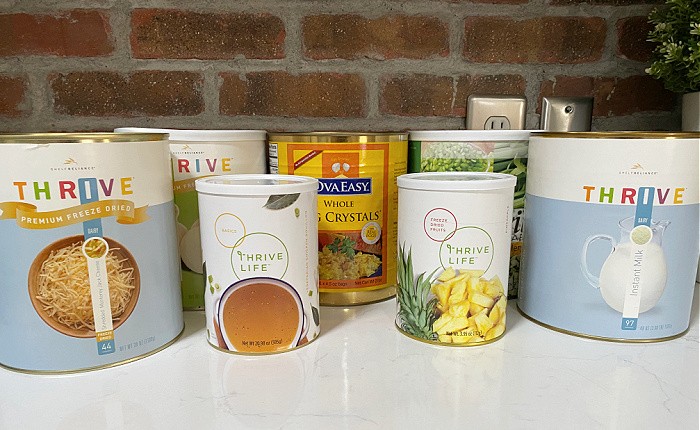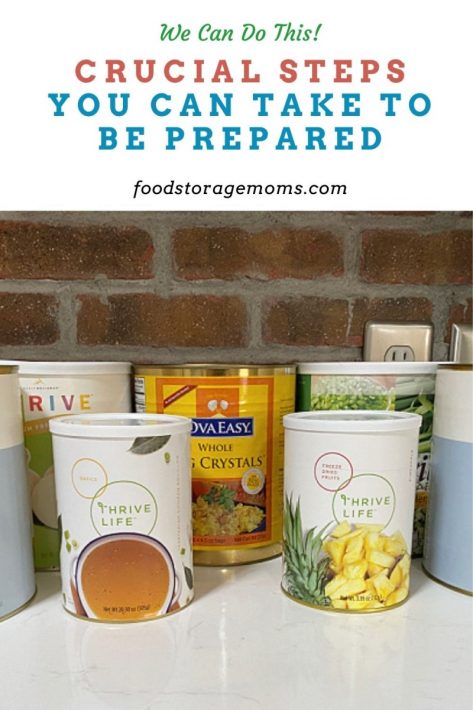
These are crucial steps that you can take to be prepared for whatever emergency may come your way. If you’re new to prepping, you may feel overwhelmed and unsure of where to begin. That’s nothing to be ashamed of because every prepper, including myself, was at that point at one time or another.
There’s a lot of information, time, and planning that goes into being prepared for emergencies. If you’re feeling lost on what all you need to do, I’d be more than happy to help.
Know Which Emergencies to Prepare For
Not knowing what type of emergencies to prepare for would limit your resourcefulness when it matters the most. This could cost you and your family their lives. You need to determine the types of natural disasters and other emergencies that your area is more likely to experience. This will help you with your planning and enable you to understand better which supplies to gather and store correctly.

Create a Plan for Your Family
Simply knowing which emergencies to be prepared for is not enough. Take the time to sit down and create a plan with your family for each of those situations. This means discussing with them and asking questions about what they would do in those moments following a disaster.
Putting your plans in writing and keeping them in a safe place would also be a good idea. It’s also okay if you follow up with your family from time to time by asking “what if” questions. It helps to go through some training exercises with family members so you can determine if each member understands their role and what to do in the event of an emergency.
Start Storing Water Now
Drinking water is one of the most essential items you will need following an emergency. When you’re first starting, make it a goal to have at least a two-week supply of drinking water for everyone in your family. To give you a better idea of how much that is, you would need four gallons of water per person, per day, to cover their drinking and sanitary purposes. In case you missed this post, Emergency Water Storage-The Basics.
It’s really up to you whether you prefer cases of bottled water, purchasing water in gallon containers, or having larger storage containers you’ve filled. Preppers who take their water storage seriously may opt for 55-gallon barrels for added convenience. You need a pump for those, and I used to have four of them on pallets on the side of my house. When we moved up north, I gave them to my sister.
However, don’t forget that there are 160-gallon and 250-gallon high-capacity tanks, and some are even larger. They typically have two spigots, one for draining and one for filling a bucket.
I Recommend these Water Containers:
- WaterBricks
- 7-Gallon Jugs (these CANNOT be stacked when filled)
- Blue Cans (Please note Brownells used to sell this great product. Everything worthwhile is getting harder to purchase)
- Water Preserver
Stock Up on Food
When you’re first starting to build an emergency food pantry, make it a goal to have enough non-perishable food to last you and your family for at least two weeks.
Once that’s been established, proceed and aim to have enough food to feed your family for 2 to 3 months. And then, much longer, my friends, I’m concerned that our current economy is not sustainable in its current state.
You never know if one day you may be dealing with a long-term crisis, and you’ll be glad that you had enough food. However, make sure to stock up on foods that your family eats. For some reason, many preppers appear to disregard this rule. In case you missed this post, How to Store Your Food Storage
Keep a Bug-Out Bag Ready
If an emergency were to happen in your area and you had to evacuate your home quickly, you may not have time to collect everything you need. This is why you should start packing up enough supplies, food, and water now.
You would need to gather enough so that you’d be able to survive for at least 3 days until you found help. If you’re ready to take it to the next level, consider creating a bug-out bag for each family member. Here are some ideas for you: 72-Hour Kits/Bug Out bags
Gather Up All Your Personal Information
Another essential step for you to take is to gather all your personal information and keep it in a safe place that everyone in your family is aware of. Some families keep all their information in a binder, but I encourage you to get a small safe that’s both fireproof and waterproof.
Losing all this information in a house fire or flood can be a significant setback, making it harder for you to recover and move forward with your life.
You’ll need to have each of your family members’ birth certificates, social security cards, passports, insurance and medical information, legal documents, titles, and an inventory of all of your home’s valuables. But it doesn’t end there. Here are some additional critical documents that you may need in case of an emergency. In case you missed this post: Free Download Emergency Binder Contents.
Start an Emergency Fund
When an emergency catches you off guard and you don’t have some money set aside, many people resort to pulling out the credit card(s) in those situations. Yet this is something that you don’t necessarily have to do if you’re financially prepared for an emergency.
Instead of falling into more debt in the future, consider starting an emergency fund today that can help you cover unexpected expenses. It doesn’t have to be a considerable amount, and you don’t have to come up with it overnight. Set a target of somewhere between $1,000 and $3,000 as a starting point.
Keep Progressing with Your Food and Water Storage
Even though you may have several months’ worth of food and water stocked up for every kind of emergency at this point, it’s essential to keep diligently adding to your stockpile and rotating the inventory to keep the supplies as fresh and usable as possible. This may take you a long time to do, and that’s okay.
You can do it slowly by throwing in a few extra cans of food in your grocery cart every time you visit the grocery store. But you also have to remember that even non-perishable foods won’t last forever. Be sure that your family develops a sound rotation system so that you use those foods before they expire and replenish them accordingly, ensuring a stable or growing inventory over time.
Say Goodbye to Debt
Having a lot of debt takes away the freedom to make purchases of items that you need most, while also preventing you from being able to help others around you. It can take its toll on a relationship, making it harder for two people to come together in agreement, especially when it comes to purchasing emergency supplies.
Getting out of debt doesn’t require rocket science. Instead, it takes time and a conscious effort on your part. You need to create a budget and stick to it. Doing so will allow you to save money and allocate more funds towards paying off debt. This also means that you’ll have to stop spending money on things you don’t necessarily need, and refrain from spending money that you don’t have.
Final Word
There are more than just one or two steps that need to be taken so that your family is prepared for an emergency. They involve careful planning, time, money, and sacrifice. A few of them may even require a different way of thinking on your part. Can you think of any other crucial steps that individuals can take to prepare for an emergency? Feel free to leave a comment down below. May God bless this world, Linda
The post Crucial Steps You Can Take to Be Prepared appeared first on Food Storage Moms.
from Food Storage Moms
No comments:
Post a Comment